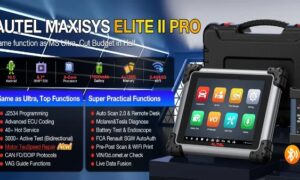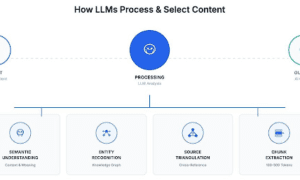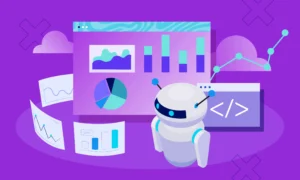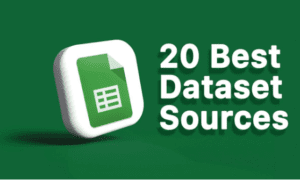Artificial intelligence (AI) continues to break barriers, and at the forefront of this evolution are agentic frameworks. These frameworks allow AI systems to operate autonomously, ensuring scalability, adaptability, and the ability to tackle real-world complexities.
By supporting advanced AI solutions, agentic frameworks are transforming the way industries automate processes and achieve efficiency. Let’s dive into the intricacies of scalable agentic frameworks and how they pave the way for innovation.
What Makes Agentic Frameworks Unique?
At their core, agentic frameworks are more than blueprints—they’re dynamic systems that allow AI agents to function autonomously. These frameworks go beyond rule-based operations to incorporate:
- Autonomous Decision-Making: Enabling agents to interpret data, analyze contexts, and choose optimal actions in dynamic environments. For instance, these agents can prioritize critical tasks in disaster response or adjust financial strategies based on market shifts.
- Adaptive Learning: Continuously evolving based on environmental changes and new information. This allows agents to refine predictive models over time, improving accuracy in areas like personalized medicine or real-time fraud detection.
- Collaborative Behavior: Allowing agents to interact and coordinate for shared goals. This feature is crucial in applications like supply chain management, where multiple agents can optimize inventory and logistics collaboratively. Collaborative agents ensure systems function cohesively, even in complex, multi-agent environments.
Unlike traditional AI setups, agentic frameworks are designed to scale and adapt, ensuring relevance across diverse applications, from real-time analytics to mission-critical operations.
Designing Scalability into Agentic Frameworks
Scalability isn’t just about handling more data or users; it’s about ensuring seamless operation as complexity grows. For agentic frameworks, this involves:
- Modular Architecture: Breaking systems into independent modules that can be upgraded or replaced without disrupting the whole. This design is essential for scaling frameworks in industries like e-commerce, where functionalities like payment processing or recommendation engines need regular updates.
- Cloud-Native Design: Utilizing distributed computing resources to process vast amounts of data efficiently. This approach enables real-time analytics in applications such as traffic monitoring or remote diagnostics. Cloud integration ensures that systems can handle surges in demand.
- Interoperability Standards: Ensuring that agents can interact seamlessly with other systems and frameworks. This capability is pivotal in smart city infrastructure, where AI systems need to collaborate across energy, transportation, and communication networks.
By embedding scalability into their design, agentic frameworks can meet the demands of expanding industries without compromising performance or efficiency.
Applications of Scalable Agentic Frameworks
Agentic frameworks have found transformative applications across industries, including:
Disaster Response
Autonomous drones equipped with agentic frameworks coordinate in real-time to deliver aid and conduct rescue missions.
These drones use real-time data to navigate dangerous environments, identify survivors, and prioritize resource distribution efficiently. The frameworks ensure that drones can adapt to unexpected obstacles or changing weather conditions.
Smart Grids
Energy systems optimize distribution and predict demand using AI agents, reducing waste and ensuring stability.
These frameworks enable dynamic energy allocation during peak hours and enhance integration with renewable energy sources. For instance, a smart grid can reroute power during outages, ensuring critical facilities remain operational.
Healthcare Innovation
Personalized treatment plans are generated by agents analyzing patient data, reducing diagnosis times and improving outcomes.
AI agents powered by scalable frameworks also facilitate predictive health monitoring, helping detect diseases at earlier stages. Hospitals can use these systems to optimize resource allocation, such as staff scheduling and equipment management.
Autonomous Transportation
Scalable agentic frameworks are pivotal in self-driving car ecosystems. By processing vast amounts of sensor data, these systems enable vehicles to make real-time decisions about navigation, collision avoidance, and route optimization.
Multi-agent frameworks allow fleets of autonomous vehicles to communicate and coordinate for efficient traffic flow.
Retail and E-Commerce
Agentic frameworks power personalized shopping experiences, real-time inventory management, and supply chain optimization. For instance, AI agents can predict consumer demand patterns, reducing overstock and understock situations.
These use cases highlight how scalability amplifies the impact of agentic frameworks, enabling them to handle real-world complexities effectively.
Overcoming Barriers to Adoption
Despite their potential, agentic frameworks face challenges that need addressing:
- Resource-Intensive Development: Building scalable frameworks requires substantial financial and technical investment. This includes the need for advanced hardware, highly skilled personnel, and long-term maintenance costs to ensure the systems remain effective as they scale.
- Data Privacy Concerns: Balancing collaboration and data security is crucial, particularly in sensitive sectors like healthcare and finance. Ensuring encryption, access control, and compliance with regulations such as GDPR is vital for safeguarding sensitive data.
- Ethical Complexity: Ensuring unbiased decision-making and transparency is critical to maintain trust in AI systems. This involves incorporating explainable AI (XAI) methods that allow stakeholders to understand how decisions are made, fostering accountability and fairness.
Addressing these challenges involves industry collaboration, regulatory advancements, and investment in ethical AI practices.
The Future of Agentic Frameworks
The future of agentic frameworks lies in their ability to push the boundaries of autonomy and scalability. Innovations to watch include:
- Quantum Computing Integration: Enhancing computational efficiency for faster and more complex decision-making. Quantum capabilities allow agents to solve optimization problems and process large datasets exponentially faster, opening doors to applications like climate modeling and real-time financial analysis.
- Context-Aware Agents: Developing AI that can better understand nuanced human interactions and environmental factors. These agents can adapt their responses to user emotions or environmental changes, which is particularly useful in personalized healthcare or customer service.
- Global Interoperability: Creating frameworks that can function seamlessly across regions and industries. This involves standardizing protocols and building AI systems that respect local regulations while collaborating across borders, critical for sectors like international trade and supply chain management.
- Neural-Symbolic Integration: Combining neural networks with symbolic reasoning to enhance explainability and reliability. This approach ensures that decisions made by AI agents are both data-driven and interpretable.
- Decentralized Frameworks: Leveraging blockchain technology to enable secure, transparent, and decentralized decision-making. This is particularly relevant for applications requiring high trust, such as financial transactions or medical data sharing.
As these advancements unfold, agentic frameworks will continue to redefine what’s possible with AI, transforming industries and driving innovation.
Conclusion
Creating scalable agentic frameworks is key to realizing the full potential of advanced AI solutions. By focusing on adaptability, efficiency, and ethical alignment, these frameworks enable autonomous systems to address complex challenges and drive innovation across industries.



































